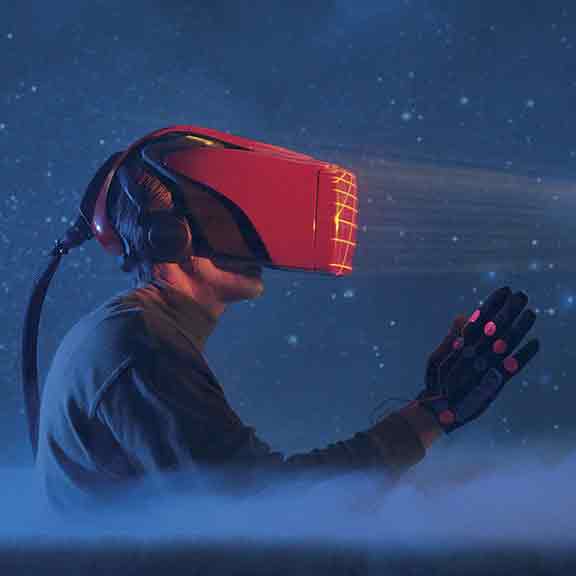Smartphones are key to our social lives, entertainment lives, work lives and, well, pretty much our whole lives these days. For something that hasn't been around that long, they're certainly becoming one of the most indispensable tools for modern living. The best smartphone is the one that most easily performs the tasks that make your life easier and more enjoyable, but how do you know which one that is? Well, that's where we come in.
Mobile phones
Mobile phones
Time for an upgrade? Find the mobile phone that's right for you.

Review and compare
Smartphone reviews
We test and compare more than 50 of the latest smartphones, including the Apple iPhone, Samsung Galaxy and Google Pixel range.
Mobile phones for seniors reviews
We test simple, easy-to-use mobile phones from Telstra, Doro, Aspera, Opel and more.
Mobile power bank reviews
We lab test and compare power banks that deliver portable power for your smartphone or tablet so you can charge on the go.
Antivirus mobile software reviews
We compare and test mobile malware solutions designed to keep Android devices secure.
Buying guides
Smartphone buying guide: How to find the right model for you
Time for a new phone? Here are our expert tips to help you pick the best.
What to know before buying a power bank
Keep your mobile device battery charged, no matter where you are.
How to find the best mobile phone for seniors and kids
Decide which features you want in a simple, easy-to-use mobile designed for older Australians and young kids.
Articles
Best mobile phones for children and teens
What to consider when buying your child's first phone or a phone for a teen.
Smartphones to avoid
We reveal the not-so-smart smartphones with poor battery life, disappointing cameras, slow performance and more.
Letting telcos regulate themselves isn't working for consumers
A coalition of consumer advocates is calling for direct government oversight.
Push for Optus to be forced to prevent further triple-0 failures
Australia’s peak telco consumer rights body is calling on the government to force Optus to have a reliable triple-0 system.
Calls for more consumer support following 3G shutdown
Politicians say the government and telcos should do more to address lost mobile coverage.
First look: Nothing Phone (3)
Is Nothing’s latest release better than Apple and Samsung’s premium smartphone offerings?
Apps or traps? Australians share frustrations with smartphone applications
Over a third of us are encountering issues like sticky subscriptions or kids making unauthorised purchases.
SIM swap and phone porting scams leave victims 'traumatised'
Data hacks and phishing schemes are helping more criminals steal phone numbers, with devastating consequences.
How we test smartphones
Our tech experts put smartphones through hundreds of tests to find the best performers.
Telcos must do more to stop domestic and family violence
The government has announced that voluntary rules to protect victim-survivors will be made mandatory.
Disgraceful sales tactics land Optus in court
The telco giant’s commission-driven sales blitz targeted remote First Nations communities and people with mental disabilities.
Retailers selling phones that could stop working properly within weeks
Brands including Coles and Boost have recently sold devices that could lose crucial services after the 3G shutdown.
How to clean your smartphone
Germs can survive on surfaces, and that includes your smartphone.
Using 4G? The 3G shutdown could still affect you
Thousands of phones could be left unable to call triple zero. See if yours will be one of them.
How to stop scam and nuisance phone calls
Bothered by unwanted calls from telemarketers or scammers? Get tips for staying off their radar.
Telco customers aren't happy, but rarely complain... why?
Many Australians don't do anything when their phone or internet services stop working. New research looks at why.
First look: Google Pixel 8a
Google's baby of the bunch is no baby at all.
Google Pixel 8 review
Does Google's mid-range smartphone have enough bells and whistles to justify the higher price tag?
Tips and tricks to limit screen time
Worried about you child's screen time? We spoke with parents and experts to find out how to tackle this thorny issue.
SwissVoice C50s smartphone review
A smart yet simple phone for seniors.
How impersonation scammers are using QR codes to steal your information
Scan or scam? Criminals are hijacking QR technology to mount phishing attacks known as 'quishing'.
The simple way to find a lost or stolen smartphone, tablet or computer
There's a feature on your smart device that you can activate to make sure you can find, lock or erase it remotely.
How we test power banks
Here's how we find the power banks that will keep your smart devices up and running when you need them most.
Apple iPhone 15 and 15 Pro review
The latest iPhones are here, so is it time to consider upgrading?
How to keep your lithium-ion batteries from catching fire
Some dangerous products have already been recalled, but there are some basic safety tips that you can follow.
A forever phone? Nokia G22 repairability review
Our expert verdict on how easy the Nokia G22 is to fix and whether it lives up to the hype.
The smartphones with the longest battery life
Stay connected all day with these phones. Plus, we reveal the quickest-charging phones from a range of brands.
The power banks that don't live up to their claimed capacities
Not all models do what they say on the pack – here are the worst offenders.
Apple iPhone 14 and iPhone 14 Pro review
Which Apple iPhone 14 should you consider?
Flubot text scammers trying new tricks
Got a text that asks you to tap on a link to find out more? Just don’t do it.
Google Pixel 6 Pro Review
A hands-on look at the slick smartphone from Google that really brings the 'wow' factor.
Kisa phone review: an accessible smartphone alternative
We look at Kisa's easy-to-use mobile for older Australians.
We've got your number: Telemarketers not playing by the rules
A CHOICE survey shows that unwanted calls and texts have risen in lockdown, and that telemarketers are flouting the law.
A simple mobile that boasts a QR code scanner
We review the Nokia 2720 Flip phone to see how well it performs as a simple mobile and a COVID-19 check in device.
Apple iPhone SE review
Apple's budget-beating iPhone SE is definitely a product of its time – if that time was 2017.
Realme 7 5G smartphone review
A mid-priced 5G smartphone with premium performance.
4 tips for looking after phone and laptop batteries
Why you shouldn't charge your device to 100% and other pointers for longer lithium battery life.
Google Pixel 4a 5G smartphone review
It’s one of the most affordable 5G phones on the market, but the 4a 5G is still a mid-range device edging closer to a premium price tag.
Australia's most reliable smartphone brands
The smartphone brands that hold up best over time, as chosen by CHOICE members.
How we test mobile phones for seniors
How we find the phones that are easy to use and provide the best way to communicate in times of emergency.
Samsung Galaxy Fold smartphone review
A smartphone that folds out into a tablet and costs $3K.
Why 5G isn't a health hazard
The science behind the latest mobile technology.
LG V50 ThinQ twin screen smartphone review
It's twin screen, it's 5G but is it good enough for you to switch?
High-gain antenna reviews – boosting mobile phone performance in remote areas
Which antennas get the best reception in the outback?
Oppo Reno 5G review
5G is here but its not everywhere, so is it worth getting a 5G mobile?
Oppo R15 Pro review
Get more smartphone for your money
Mobile phone rights for consumers
Signing on the dotted line doesn't mean signing away your rights.
Online retailers selling refurbished phones as new are reprimanded by ACCC
Almost 200 complaints lodged to the watchdog just this year.
Mobile phones: repair or replace?
The design of smartphones means we keep upgrading instead of repairing them.
Related

Phone Plans
Whether you're using a landline, a mobile, or VoIP, our independent advice on reducing your bills is totally off the hook!

Phones
Mobile phone and home phone reviews, tests and buying guides to help you get – and stay – connected.

